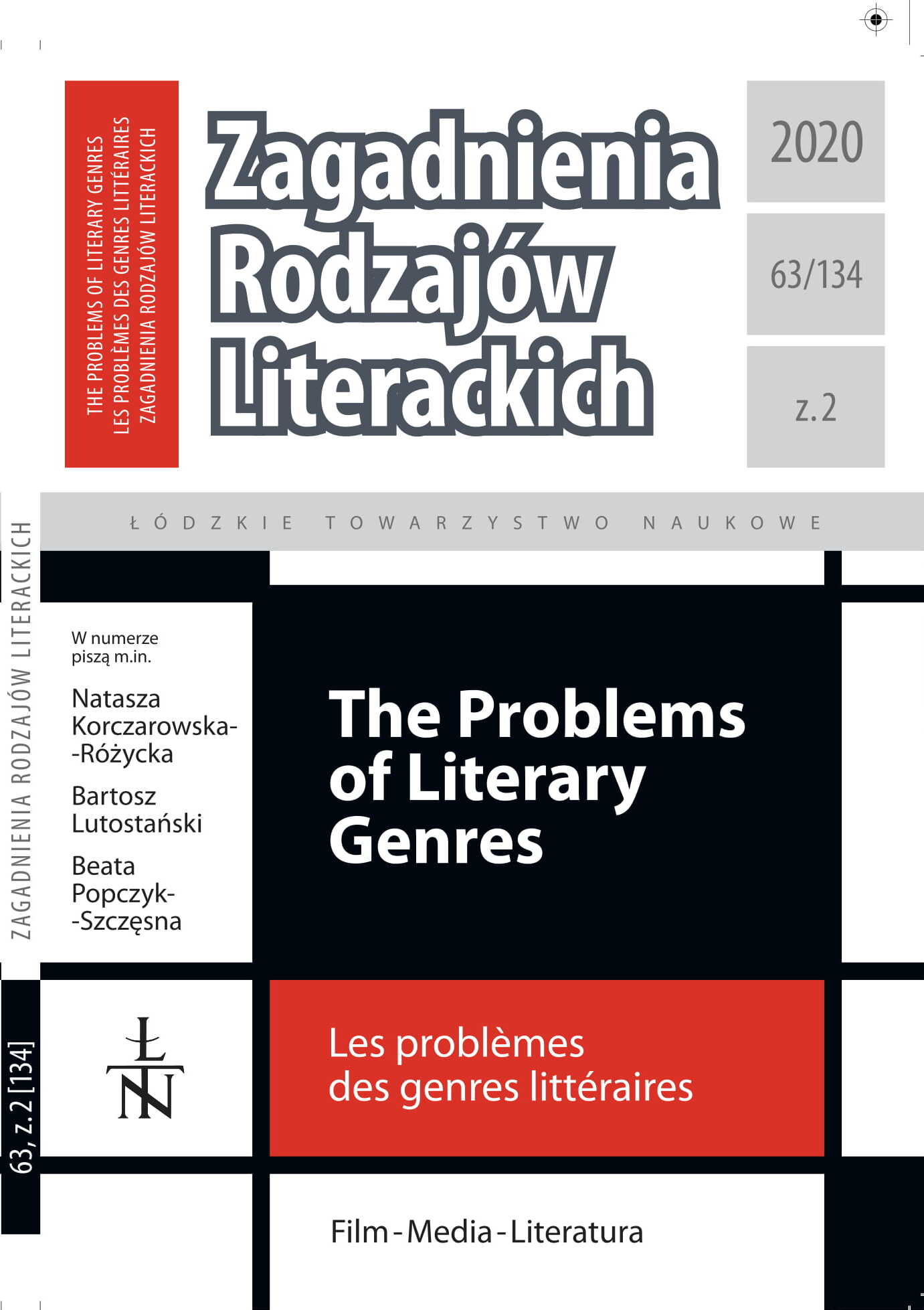Across the Boundaries of Signs and Media: On Transgeneric Qualities of Selected Contemporary Fiction
DOI:
https://doi.org/10.26485/ZRL/2020/63.2/4Keywords:
genre, media, novel, semiotics, multimodality, multimedia, Night Film, PesslAbstract
The following article construes the novel as a genre and explores how the innovations of utilizing multiple semiotic resources and media platforms are transforming it these days. With Marisha Pessl’s Night Film (2013) as the primary example I look into the properties of the multimodal and multimedia novel with a view to presenting various ways of transgressing the parameters of the traditional (monomodal and mono-medial) novel. Drawing from L. Elleström’s theory of “modalities of media” I seek to go to the depth of the semiotic and semantic mechanisms of Night Film and argue how the integration of the verbal and the visual renders a new reading experience. Also, on the basis of J.P. Bolter and R. Grusin’s idea of hypermedia I claim that the multiplication of sign systems and media aims at enhancing the ontological illusion.
Downloads
References
Bolter Jay David, Richard Grusin (2000), Remediation. Understanding New Media, MIT Press, Cambridge MA.
Ellestrom Lars (2010), The Modalities of Media: A Model for Understanding Intermedial Relations [in:] Media Borders, Multimodality and Intermediality, ed. Ellestrom L., Palgrave Macmillan, Houndmills.
Fowler Alastair (1997), Kinds of Literature. An Introduction to the Theory of Genres and Modes, Clarendon Press, Oxford.
Gibbons Alison (2011), Mulitmodality, Cognition, and Experimental Literature, Routledge, London–New York.
Głowiński Michał (2007), Gatunek literacki i problemy poetyki historycznej [in:] Polska genologia literacka, eds. Cudak R., Ostaszewska D., PWN, Warsaw.
Hallet Wolfgang (2014), The Rise of the Multimodal Novel. Generic Change and Its Narratological Implications [in:] Storyworlds across Media, eds. Ryan M.-L., Thon J.-N., University of Nebraska Press.
Jenkins Henry (2006), Convergence Culture. Where Old and New Media Collide, New York UP, New York.
Kress Gunther, Theo van Leeuwen (2001), Multimodal Discourse. The Modes and Media of Contemporary Communication, Arnold, London.
Lutostański Bartosz (2019), Prolegomena do genologii transmedialnej, “Tekstualia”, vol. 58, no. 3. Media Multimodalne (2018), eds. Hoffman I., Kępa-Figura D., Vol. I and II, Wydawnictwo UMCS, Lublin.
Mittell Jason (2004), Genre and Television. From Cop Shows to Cartoons in American Culture, Routledge, London–New York.
Multimodal Studies. Exploring Issues and Domains (2011), eds. O’Halloran K., Smith B.A., Routledge, London–New York.
Norgaard Nina (2010), “Multimodality and the Literary Text: Making Sense of Safran Foer’s Extremely Loud and Incredibly Close.” New Perspectives on Narrative and Multimodality, ed. Page R., Routledge, London–New York.
Page Ruth (2010), Introduction [in:] New Perspectives on Narrative and Multimodality, ed. Page R., Routledge, London–New York.
Palmer Alan (2008), Realist Novel [in:] Routledge Encyclopedia of Narrative Theory, eds. Herman D., et al., Routledge.
Pessl Marisha (2013), Night Film, Random House, New York.
Polska genologia (2009), ed. Cudak R., PWN, Warsaw.
Polska genologia literacka (2007), eds. Cudak R., Ostaszewska D., PWN, Warsaw.
Ryan Marie-Laure (2014), Story/Worlds/Media: Tuning the Instruments of a Media Conscious Narratology [in:] Storyworlds across Media, eds. Ryan M.-L., Thon J.-N., University of Nebraska Press, Lincoln–London.
Surfiction. Fiction Now… And Tomorrow (1975), ed. Federman R., Swallow Press, Chicago. The Routledge Handbook of Multimodal Analysis (2016), ed. Jewitt C., Routledge, London– New York.







